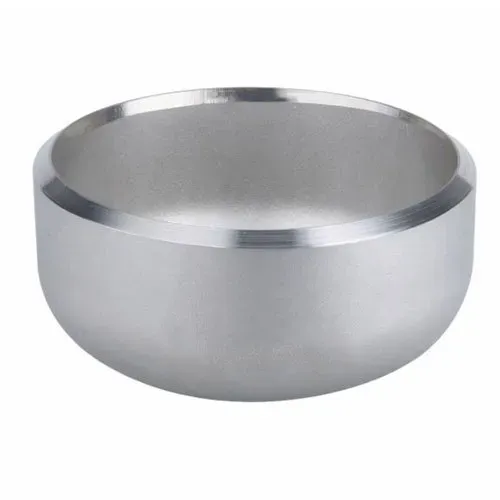-
Cangzhou Yulong Steel Co., Ltd.
-
Phone:
+86 13303177267 -
Email:
admin@ylsteelfittings.com
- English
- Arabic
- Italian
- Spanish
- Portuguese
- German
- kazakh
- Persian
- Greek
- French
- Russian
- Polish
- Thai
- Indonesian
- Vietnamese
- Zulu
- Korean
- Uzbek
- Hindi
- Serbian
- Malay
- Ukrainian
- Gujarati
- Haitian Creole
- hausa
- hawaiian
- Hebrew
- Miao
- Hungarian
- Icelandic
- igbo
- irish
- Japanese
- Javanese
- Kannada
- Khmer
- Rwandese
- Afrikaans
- Albanian
- Amharic
- Armenian
- Azerbaijani
- Basque
- Belarusian
- Bengali
- Bosnian
- Bulgarian
- Catalan
- Cebuano
- China
- China (Taiwan)
- Corsican
- Croatian
- Czech
- Danish
- Esperanto
- Estonian
- Finnish
- Frisian
- Galician
- Georgian
- Kurdish
- Kyrgyz
- Lao
- Latin
- Latvian
- Lithuanian
- Luxembourgish
- Macedonian
- Malgashi
- Malayalam
- Maltese
- Maori
- Marathi
- Mongolian
- Myanmar
- Nepali
- Norwegian
- Norwegian
- Occitan
- Pashto
- Dutch
- Punjabi
- Romanian
- Samoan
- Scottish Gaelic
- Sesotho
- Shona
- Sindhi
- Sinhala
- Slovak
- Slovenian
- Somali
- Sundanese
- Swahili
- Swedish
- Tagalog
- Tajik
- Tamil
- Tatar
- Telugu
- Turkish
- Turkmen
- Urdu
- Uighur
- Welsh
- Bantu
- Yiddish
- Yoruba

Sep . 06, 2024 22:13 Back to list
High-Quality Seam and Seamless Pipes - Durable & Reliable Solutions
Seam and Seamless Pipe Understanding the Differences and Applications
When it comes to piping, the choice between seam and seamless pipes is crucial for ensuring the strength and durability of various applications across diverse industries. Understanding the differences between these two types of pipes can aid manufacturers, engineers, and contractors in making informed decisions during the design and construction phases of projects.
Seam and Seamless Pipes What are They?
Seam pipes, often referred to as welded pipes, are manufactured by welding together flat strips or plates of metal. The welding process creates a seam, which is the line where the edges of the metal meet. These pipes can come in different styles, including longitudinal (the seam runs lengthwise along the pipe) and spiral (the seam spirals around the pipe). While the welding process ensures that the pipes can be produced efficiently at lower costs, the seam is often seen as a potential weak point, as it may be susceptible to stress and fatigue over time.
On the other hand, seamless pipes are produced through a different method. They are made from a solid round steel billet, which is heated and then pierced through the center to create a hollow tube. This method eliminates any seams and joints, offering a smooth, continuous pipe structure. Consequently, seamless pipes generally exhibit higher levels of strength and durability, making them suitable for high-pressure and high-temperature applications.
Applications of Seam and Seamless Pipes
seam and seamless pipe

Seam pipes are commonly used in less demanding applications where the risks of seam failures are minimal. They are widely found in construction projects, plumbing systems, and various industrial processes. Their affordability and ease of manufacturing make them an attractive option for many builders and manufacturers.
In contrast, seamless pipes are preferred for critical applications, particularly in industries such as oil and gas, chemical processing, and power generation. The lack of seams enables seamless pipes to withstand higher pressures and resist cracking, making them ideal for conveying fluids in extreme conditions. For instance, in the oil and gas sector, seamless pipes are essential in environments that require reliable and safe transport of crude oil and natural gas.
Choosing the Right Type of Pipe
The decision between using seam and seamless pipes depends on various factors, including the specific requirements of the project, budget constraints, and the desired longevity of the piping system. Engineers and procurement specialists should assess the environmental conditions, operating pressures, and material compatibility of the systems they are designing.
In conclusion, the choice between seam and seamless pipes plays a significant role in the overall success of a project. Understanding their manufacturing processes, primary applications, and inherent strengths will enable stakeholders to make educated choices tailored to their needs. As industries continue to evolve, the demand for both types of pipes will persist, with innovations in materials and production techniques shaping the future of piping systems worldwide. Whether opting for seam or seamless pipes, a thorough understanding of their properties will ultimately contribute to the safety and efficiency of various applications.
Latest news
-
ANSI 150P SS304 SO FLANGE
NewsFeb.14,2025
-
ASTM A333GR6 STEEL PIPE
NewsJan.20,2025
-
ANSI B16.5 WELDING NECK FLANGE
NewsJan.15,2026
-
ANSI B16.5 SLIP-ON FLANGE
NewsApr.19,2024
-
SABS 1123 FLANGE
NewsJan.15,2025
-
DIN86044 PLATE FLANGE
NewsApr.19,2024
-
DIN2527 BLIND FLANGE
NewsApr.12,2024
-
JIS B2311 Butt-Welding Fittings LR/SR 45°/90° /180°Seamless/Weld
NewsApr.23,2024











